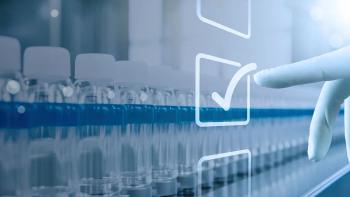
- BioPharm International-06-01-2012
- Volume 25
- Issue 6
Developing Discoveries into New Therapeutics
Formulators and developers are at the heart of the industry's basic premise-they are saving lives.
Recognition and reward deservedly come to those biomedical scientists who succeed in groundbreaking research to discover new proteins, pathways, techniques or mechanisms. There are a host of awards and honors from professional societies, trade organizations, national charities focused on diseases, and the ultimate in prestigious awards, the Nobel Prizes. Yet what is the practical value of such discoveries unless they are applied and developed to bring new medicines to the world?
As bioprocessors, we are appliers of those discoveries, the developers who put into practice the discoveries of research and turn them into new biopharmaceutical products. We are the "D" of "R&D" —the ones who apply what research has discovered to create something useful. We look both ways, to research and manufacturing, to bridge these worlds with processes that are both robust and scalable.
Michiel E. Ultee, PhD
Our work covers all aspects of biopharmaceuticals, from the earliest cell cultures to the finished vials of product. Research often presents us with low-titer cultures, sometimes with untenable ingredients like serum, and purification processes based on nonscalable techniques, such as affinity tags, dialysis, or precipitation. Processing is understandably minimal in research, given the focus on key properties of the molecule of interest rather than residual impurities or minor variants. Similarly, analytics, beyond those assessing the activity of the protein, are often limited as well.
What research does do is suggest a new potential therapeutic, a new approach to a disease or condition, and hence new hope for patients. Yet none of these admirable concepts can be realized until that discovery is developed into a safe and effective new biopharmaceutical. This is where we come into the picture.
Our upstream developers push titers with new cell lines, media and feeds, applying expert knowledge to bioreactor parameters to render the cells both prolific and productive. Our downstream scientists apply advanced chromatographic and filtration methods to yield "squeaky clean" proteins with only ppm levels of impurities, yet with reasonable recoveries. Our analytical biochemists analyze these trace impurities and apply sophisticated instrumentation to assess the multitude of molecular properties of the typically complex glycoproteins that we are developing.
Finally, formulation is an essential component of any biopharmaceutical. Stability is not a given, even for well-behaved proteins. We need to ensure that the chemical "neighborhood" in which we place a protein is one where it will both retain its activities and properties and not develop any new ones.
It is ironic that Alfred Nobel, himself a formulator and developer, chose to honor basic rather than applied research with his scientific prizes. In his own work, the key discovery, nitroglycerine, had been discovered more than twenty years before Nobel began working with it. There was just no safe way to handle it. His genius was in developing an effective, robust and scalable formulation that would allow this potent explosive to be safely and practically used. If basic research is our "Nitro," then bioprocessing should be considered the "Dynamite" of biopharmaceuticals.
Michiel E. Ultee, PhD, chief scientific officer, Laureate Biopharmaceutical Services, Princeton, NJ,
Articles in this issue
over 13 years ago
BioPharm International, June 2012 Issue (PDF)over 13 years ago
Back-to-Basics with PDUFA Vover 13 years ago
Determining Process Quality Metrics for CMOsover 13 years ago
New Biopharmaceuticalsover 13 years ago
Reducing Human Errorover 13 years ago
Know the Regulationsover 13 years ago
Creating a Product Portfolio from the Ground Upover 13 years ago
25 Years of Nanoparticles: A Look Forwardover 13 years ago
25 Years of BioPharma Industry GrowthNewsletter
Stay at the forefront of biopharmaceutical innovation—subscribe to BioPharm International for expert insights on drug development, manufacturing, compliance, and more.




